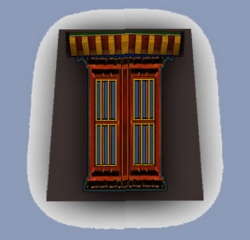Ask The Lama
by Nicholas P. :
On your CD Tibetan Dream Yoga you talk about a meditation called a hermitage where you are in complete darkness, can you explain this?
Lama Surya Das: I’m not sure what you’re actually asking about, but a hermitage is a cloistered sanctuary or retreat place where outside influences are absolutely minimized, perhaps like a cave or hut-like cabin in the woods (without cable or internet access). Of course one might use a basement, attic, garage, or even walk-in closet, although’ it could become quite claustrophobic. Modern techie yogis might even find a way to do it with a blindfold, rather than going somewhere too far away–Why not?! However, one still has to absolutely minimize the habitual distractions and outer stimulation– sights, sounds, smells, and interactions of most any kind– in order to fulfill the purpose of this kind of austere and rigorous contemplative practice, such as progressing on the spiritual path and becoming more awakened.
What one actually does (and intends) inside that outer hermitage–an exquisite dimension of noble solitude, sacred silence and sublime interiority– determines most of the outcome or results of such a practice period and retreat. One could precipitate a genuine dark night of the soul, so receiving guidance, blessings and even protection are often healthy prerequisites recommended to aspiring practitioners before allowing them to simply leap into the abyss.
Dark-meditation practice in the Tibetan tradition is useful for preparing for death and the afterlife (bardo: intermediate state) practices, for dream yoga (lucid dreaming), and for visionary practices such as Clear Light meditations and Dzogchen togal (“leap-over”). I did the traditional 49 day (7 week) darkness retreat once long ago, abroad, without any optic nerve stimulation– in other words, without turning on lights or flashlight or going outside during day or night. I would say that it took some time, but my inner eye and awareness-lamp became much brighter, awareness refined and sharper, visions and lucid dreams became more accessible and prominent in my day-long consciousness, etc.
Marty Lowenthal, a friend of mine in E. Massachusetts, has written a whole book about dark meditation retreat practice, it’s called Dawning of Clear Light: A Western Approach to Tibetan Dark Retreat Meditation. There’s also a fine place to do darkness retreat in individual hermitages specifically built for that, in Conway, Massachusetts, at Namkhai Norbu Rinpoche’s center.
Submitted by Nicholas P. via www.surya.org on 10-24-12
